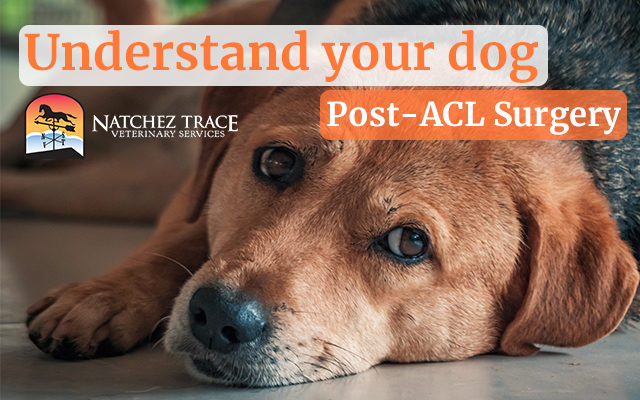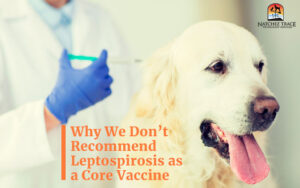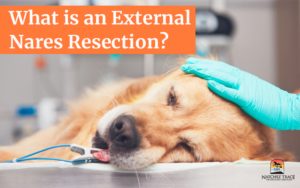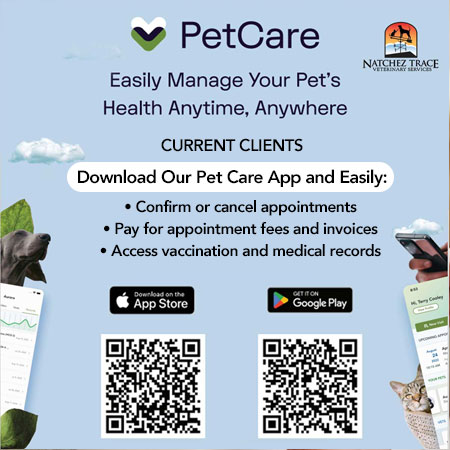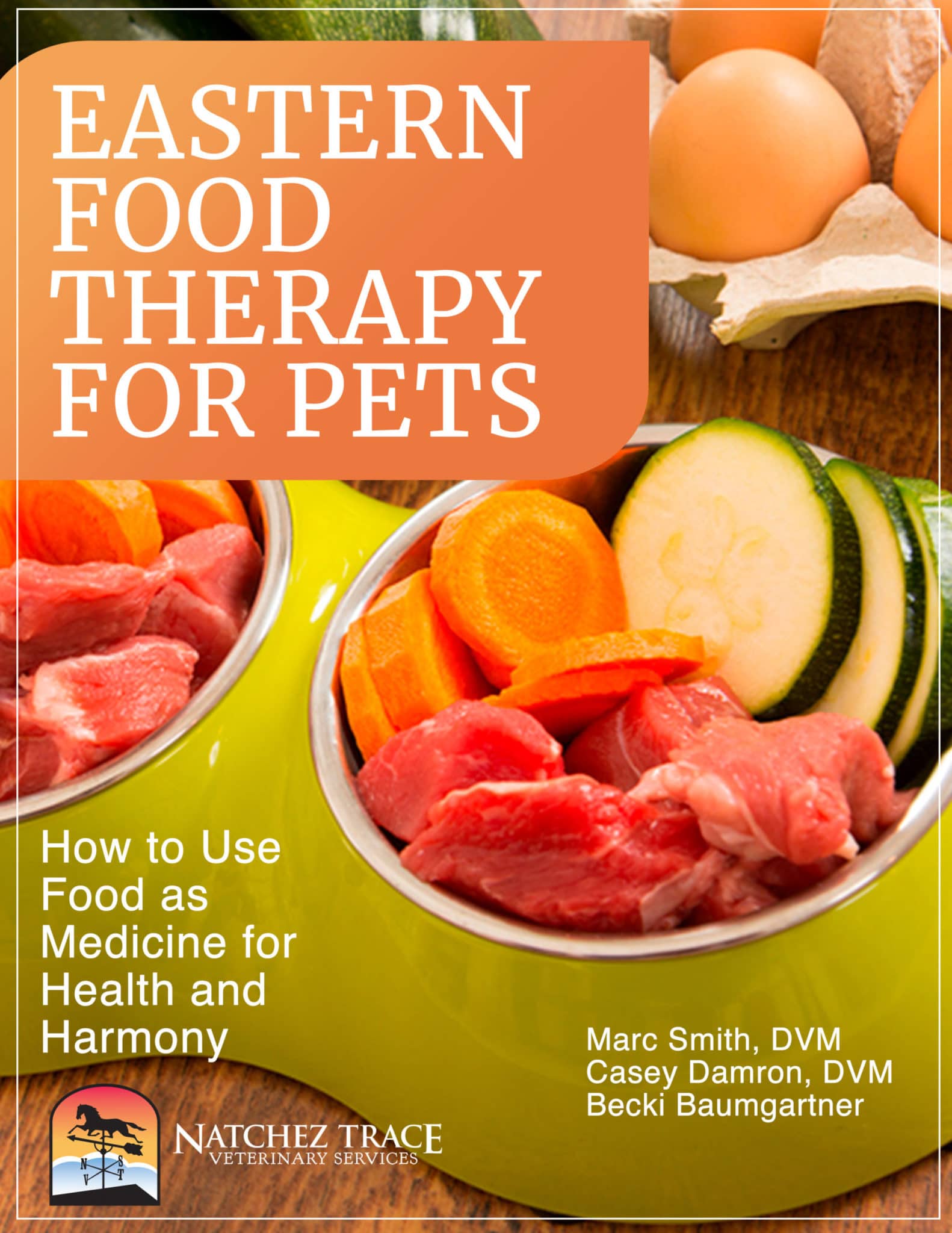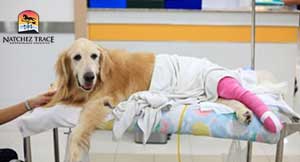 Bringing your dog home after ACL surgery can be a daunting experience! ACL surgery is a significant operation. The incision and stitches appear painful, and your dog may seem sluggish and “out of it.”
Bringing your dog home after ACL surgery can be a daunting experience! ACL surgery is a significant operation. The incision and stitches appear painful, and your dog may seem sluggish and “out of it.”
How do you know what is normal and what is not normal? Is there anything special you can do to make your dog feel better?
The following information should put your mind at ease!
What to Expect the Night Immediately After ACL Surgery
Here’s a compilation of situations that seem concerning to pet owners after surgery. Although concerning to pet owners, the following scenarios are normal post-anesthesia behavior.
1. Your Dog Doesn’t Want to Drink
- Not wanting to drink the night after surgery is perfectly normal.
- Thirst and appetite may not be entirely normal for a few days after surgery.
2. Your Dog Seems Disoriented
- Disorientation and/or listless behavior are normal after sedation and anesthesia.
- Listless behavior may continue until twenty-four hours after the surgery.
3. Your Dog Howls and Whines Through the Night
- Many dogs howl and whine the night after surgery.
- Such behavior is a normal reaction after undergoing anesthesia.
4. 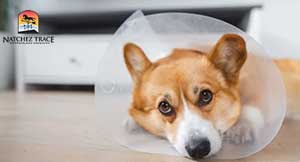 The Surgery Site Bleeds or Seeps
The Surgery Site Bleeds or Seeps
- Seeping and bleeding from the surgery site are typical and may continue for several days.
5. Your Dog Hates Wearing the Cone
- Your dog must wear a cone to keep him/her from licking and chewing the surgery site.
- Licking and chewing around the surgery site is the most common cause of infection.
- Your dog must wear the cone for 10-14 days to avoid infection and damage in the future.
- Keeping the cone on is crucial because dogs can chew through their suture line in less than 30 seconds.
What You Should Do When You Bring Your Dog Home
You’ve just returned home from the vet’s office and want to make your pet as comfortable as possible. What should you do next?
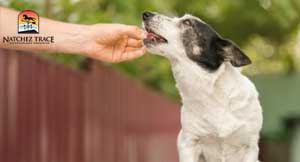 Offer your pet small amounts of water when you get home.
Offer your pet small amounts of water when you get home.- Later on, you may offer small amounts of food.
- Realize your dog’s appetite may not be entirely normal for a few days.
- Check your dog’s incision daily for redness, swelling, or discharge.
- If you observe any of the above signs, please bring your dog back for a recheck. Sometimes dogs experience what we call a “suture reaction.” Suture reactions occur when the body rejects the suture material. There is no treatment for a suture reaction.
- Restrict running, jumping & climbing stairs for the next ten days. Too much activity can cause damage to the surgery leg. Pet parents often ask, “When can my dog climb stairs after ACL surgery?” The answer is you must wait ten days. No running, jumping, or climbing stairs for ten days after surgery.
- No swimming or bathing for the next ten days. Swimming or bathing can introduce bacteria into the incision and cause infection. You may wipe and clean the suture area with a warm, damp cloth.
- Do not give aspirin, Tylenol, or any other pain relievers! Over-the-counter pain relievers can be poisonous to pets! We prescribe safe pain medication when needed.
- Remove your dog’s stitches and/or staples in 10-14 days. Please return for this service. There is no extra charge for suture removal unless we need to sedate your dog.
You Must Limit Your Dog’s Activity
ACL Repair is a complicated surgery! Your dog will need to rest and recover over the next several weeks.
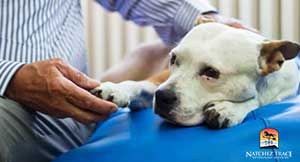 The first two weeks after surgery are the most crucial for proper healing after the acl surgery. In addition, you will need to supervise your pet full-time during the first two weeks.
The first two weeks after surgery are the most crucial for proper healing after the acl surgery. In addition, you will need to supervise your pet full-time during the first two weeks.
Do not allow your pet to jump on and off furniture. Do not allow any off-leash activity during the two-week healing period, either. Please supervise your dog at all times and only allow stair climbing when necessary.
Physical Therapy After ACL Surgery Improves Range of Motion
You can find additional information and a home physical therapy guide here.
In the first week, you will only perform massage, give ice packs, and do light range of motion exercises. Gradually increase the intensity as your dog allows.
Here’s a video of Dr. Smith nicely performing post-op physical therapy for a dog who just had dog ACL surgery:
Laser Therapy After ACL Surgery Speeds Healing and Reduces Inflammation at the Surgery Site
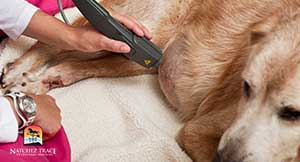 A laser therapy program can help speed healing and reduce inflammation at the surgery site.
A laser therapy program can help speed healing and reduce inflammation at the surgery site.
You can read more about laser therapy here.
The recommended schedule of laser therapy is two visits per week for three weeks, a total of six sessions.
Please contact our office if you would like laser therapy for your dog!
How to Speed Healing and Make Your Pet More Comfortable After ACL Surgery
You can speed healing, make your dog more comfortable, and improve the surgery’s outcome by performing simple tasks during recovery.
Our simple post-surgery protocol will give your dog the best possible outcome and make him more comfortable in the weeks following surgery.
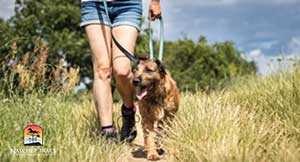 Leash Walks
Leash Walks
- Leash walks should be controlled and short in length.
- Walk at a slow pace and encourage the placement of the affected leg on the ground.
- Doing so encourages weight-bearing and strengthens the leg.
- Only leash-walk for five minutes two to three times daily during the first week.
- During the second week, work up to 10 minutes two to three times daily.
Range of Motion
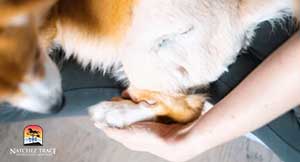 Range of motion exercises decrease the formation of scar tissue.
Range of motion exercises decrease the formation of scar tissue.- The formation of scar tissue can permanently limit your dog’s range of motion.
- Make sure you perform the range of motion exercises!
- Range of motion exercises are often a bit painful at first.
- You can ease the pain by supporting the limb with one hand over the knee and the other grasping below the hock.
- Next, gently extend the right rear limb and flex it as far as your pet will allow for 10-15 repetitions two to three times daily.
- Gradually work up to 20 repetitions.
Ice Packs
- Use ice packs during the first week post-op to reduce inflammation and soreness.
- Place an ice pack over the knee for 10-15 minutes after exercises twice daily.
If you have further questions about ACL surgery or post-surgery care, please don’t hesitate to contact our clinic.
People Also Ask:
- What is dog ACL surgery, and when is it necessary for my pet? Dog ACL surgery, commonly known as TPLO (Tibial Plateau Leveling Osteotomy) or TTA (Tibial Tuberosity Advancement), involves repairing a torn or ruptured anterior cruciate ligament in a dog’s knee. This surgery becomes necessary when a dog experiences a ligament tear, causing lameness, difficulty in walking, and pain. Surgical intervention is often recommended to restore stability to the knee joint and alleviate discomfort.
- What can I expect during the recovery period after dog ACL surgery? Post-surgery, your dog’s recovery typically involves a period of restricted activity, pain management, and rehabilitation. Initially, your pet may need to use a sling or assistive devices, follow a prescribed medication regimen, and gradually increase controlled physical activity as guided by the veterinarian. The recovery duration varies based on the surgical procedure and your dog’s overall health, with full recovery often taking several months.
- Are there alternatives to surgery for a dog’s torn ACL, and how do I decide on the best course of action? Non-surgical management for a torn ACL in dogs may include conservative treatments like physical therapy, weight management, and restricted activity. However, while non-surgical options might offer relief for some dogs, they may not fully restore stability to the knee joint, potentially leading to ongoing discomfort or degenerative joint changes. Deciding on the best course of action involves consulting with a veterinarian, considering your dog’s health, age, size, and the severity of the injury.

